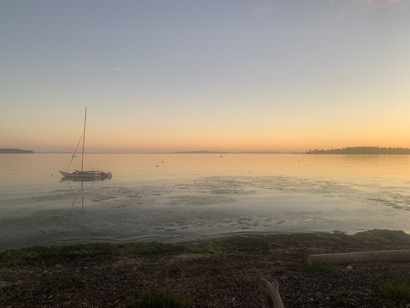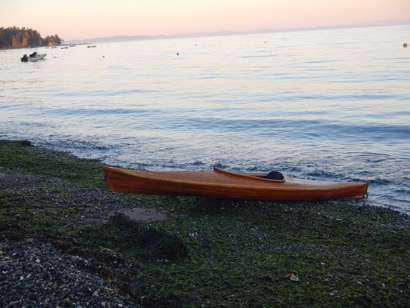New routines
17/08/23 02:15
Since I was a little child, I have been a morning person. I wake up ready to go. Before I retired, I was able to accomplish many work tasks before the office became busy with people. At church camp, I was often the first to rise and used the time to prepare for the day. I have also used the wee hours of the day as my personal time: a time of prayer and restoration. When we lived in South Dakota I often would rise early and head for the lake with a canoe or kayak to paddle. For several years I had a regular paddling routine that was part of my self-care and stress management. Connecting with the natural world is important to my sense of well being, and paddling into the sunrise is a perfect way for me to connect.
Retirement means learning new routines and shifting schedules. I no longer have to rise before others in order to have quiet private time. I don’t have a stream of interruptions in my day - at least the interruptions are different.
I haven’t yet developed a paddling routine in my retirement years, but it is one of my priorities for this season of my life now that I am once again not working. My new routine, however, needs to synchronize with a different clock than the rising and falling of the sun. I have to learn to pay attention to the moon as well.

Less than 10 miles from our home, about the same distance as I drove to the lake when I lived in South Dakota, Drayton Harbor is much deeper. Even though the level of water rises and falls with the tides in the harbor, the change is simply with how much water is beneath the boats. I could go to the harbor and launch my boat there.
However, there is something very appealing about paddling in our own protected bay, learning the water of the place where I live, and not wasting fuel driving back and forth. I have the time. What is needed is my learning to adjust to a new schedule.
Although we have live here for nearly two years, and walk along the shore nearly every day, I haven’t yet become tuned to the rising and falling of the tides. I am roughly aware of how close the water is when we walk, but some days we walk in the afternoon and other days we walk in the evening. Since we don’t walk at the same time every day, the variations in water level haven’t become part of my internal clock.

It turns out that the old adage is wrong. In fact, you can actually teach an old dog new tricks. According to an article I read, it takes a bit of patience, a sensitivity to sources of stress for the dog, and rewards that are tuned to the dog’s needs. Not every old dog is as motivated by food rewards as younger animals. Special attention and perhaps a special toy or game might be more motivating than a dog biscuit.
l’m not sure what the equivalent is for an old preacher, but I do know that food is less of a factor than once was the case. These days it pays for me to be mindful of my eating. Otherwise I am tempted to eat more than I need and the result is weight gain that is more difficult to shed than when I was younger. The dance of diet and exercise is another good reason to have a paddling routine. Although my lower body moves less when I am paddling, I do use my lower muscles to control the boat. Even though I am sitting while paddling, the boat is steered by the direction my hips and legs are pointed. And my arms and shoulders are in constant motion as my paddle slips in and out of the water. It is a good workout when I put some energy into my paddling. Paddling is like walking. When I am tired I can simply go slower. I still make progress. I still get where I am going, but a slower pace means it takes me longer to get there.
Taking longer to reach a destination may well be another skill I need to develop in my adjustment to retirement. That isn’t something I’ve practiced much in my life.
There is much that I still need to learn.
